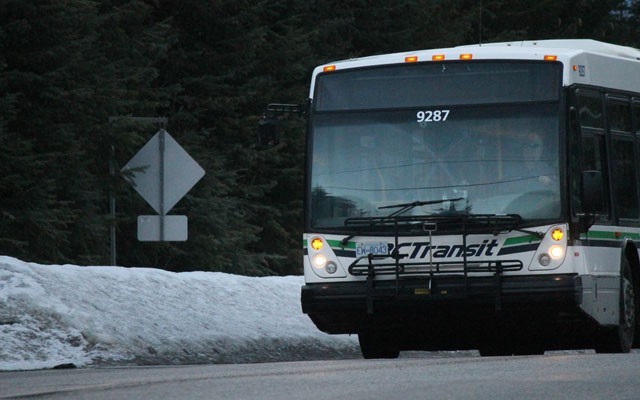Getting from Point A to Point B — and occasionally Point C — in and around Whistler is getting more and more challenging by the week.
Between traffic congestion, wacky winter conditions and packed parking lots, just staying home feels like the ideal option more often than not.
Five days out of seven, though, that's not possible because of, you know, work commitments. For me, that means making the schlep from my suite in Emerald Estates to our office in Function Junction and lately, it's been on public transit.
When my car essentially gave up the ghost in the fall, I looked at my options to replace it but wasn't keen on shelling out a few bucks for a sketchy used car, a little bit more for one with a little less risk, or going back on monthly payments for what would essentially feel like the rest of my adult life. (Slight exaggeration.)
I use Whistler Transit each day to get to work and can usually harangue a coworker to drive me home, at least. My partner lives in Maple Ridge, so when I head down for a visit, I usually connect with a driver on Pop Rideshare or through the Hitching the Sea to Sky Facebook group and then SkyTrain to the heart of the 'burbs.
Overall, carless life has worked out all right, but many of the frustrations that come up stem from BC Transit's scheduling and routing in the resort.
Working at one end of the resort and living in another is a nuisance in that not all buses extend up to Emerald Estates or down to Function Junction, leaving some dead zones in the schedule where you either stay on the outskirts for 45 minutes or an hour, or go kill some time in the village. I get that this can sound entitled (especially after coming from Winnipeg, where bus service stopped just before the bars let out), but it wouldn't feel like such a nuisance if the autumn schedule hadn't had its connections down perfectly. On that schedule, catching the No. 3 from Emerald regularly resulted in catching a No. 2 to Function Junction fairly quickly. Both are "express" routes and bypass Alpine Meadows and Nordic Estates, respectively, so you can get from one end of the resort to the other in about 45 minutes. You'd expect the busier winter schedule to keep up the momentum, but with an exception here or there, that really isn't the case.
The system, overall, is a fairly simple one and its top priority is to bring people to Whistler Village without transferring, which it does quite well. So why, then, is it seemingly not possible to schedule the buses to get the skiers and boarders where they need to go while also setting up some simple transfers for those who need them?
Instead of playing armchair planner, though, it's probably actually best to go straight to the source. I chatted with BC Transit planning manager Matthew Boyd to try to get a better understanding of what goes into putting together a schedule.
Working with the RMOW, he said there are a number of factors that come into play when making a timetable for a given period.
"It's a cosmic ballet sometimes," he said. "It's dependent on interlining. A bus doesn't usually stay on one route for the entire day. A bus is designed to do many routes... It allows us to literally optimize the use of that bus as much as we can while also balancing operator recovery to keep the bus on time so there's also additional minutes built into the schedule to allow for on-time performance so the bus remains on schedule, particularly in the winter season when inclement weather and increased congestion can sometimes delay the buses."
If you're at the transit loop, you'll regularly see drivers switching from the No. 2 to take a spin on the No. 4 free Whistler Village lap or down into Tapleys on the No. 6. As a driver, keeping it straight the first few days of action is no small feat.
Boyd said the organization has spent the winter studying rider trends and is currently going through the data to implement service changes that could be implemented as soon as next winter.
"One of the recommendations in the Transit Future Plan was to take a look at, in more detail, the relationship between north of the village and south of the village and how people use the service to go from one end to the other. We know that a lot of people use it to get to the village but what we need to get a better understanding of is how people are using it to get from Emerald to Function Junction, as an example," he said. "We did a very comprehensive ride-check analysis so we actually got on the buses and worked with operators and the operating company to figure out how those ridership patterns are working."
As we've written ad nauseum in these pages, transportation is one of the biggest challenges facing the resort. By taking the time to get a better sense of how locals are using the transit system, hopefully it becomes a more appealing alternative for drivers to reduce congestion not only on the roads, but in our oxygen as well.




